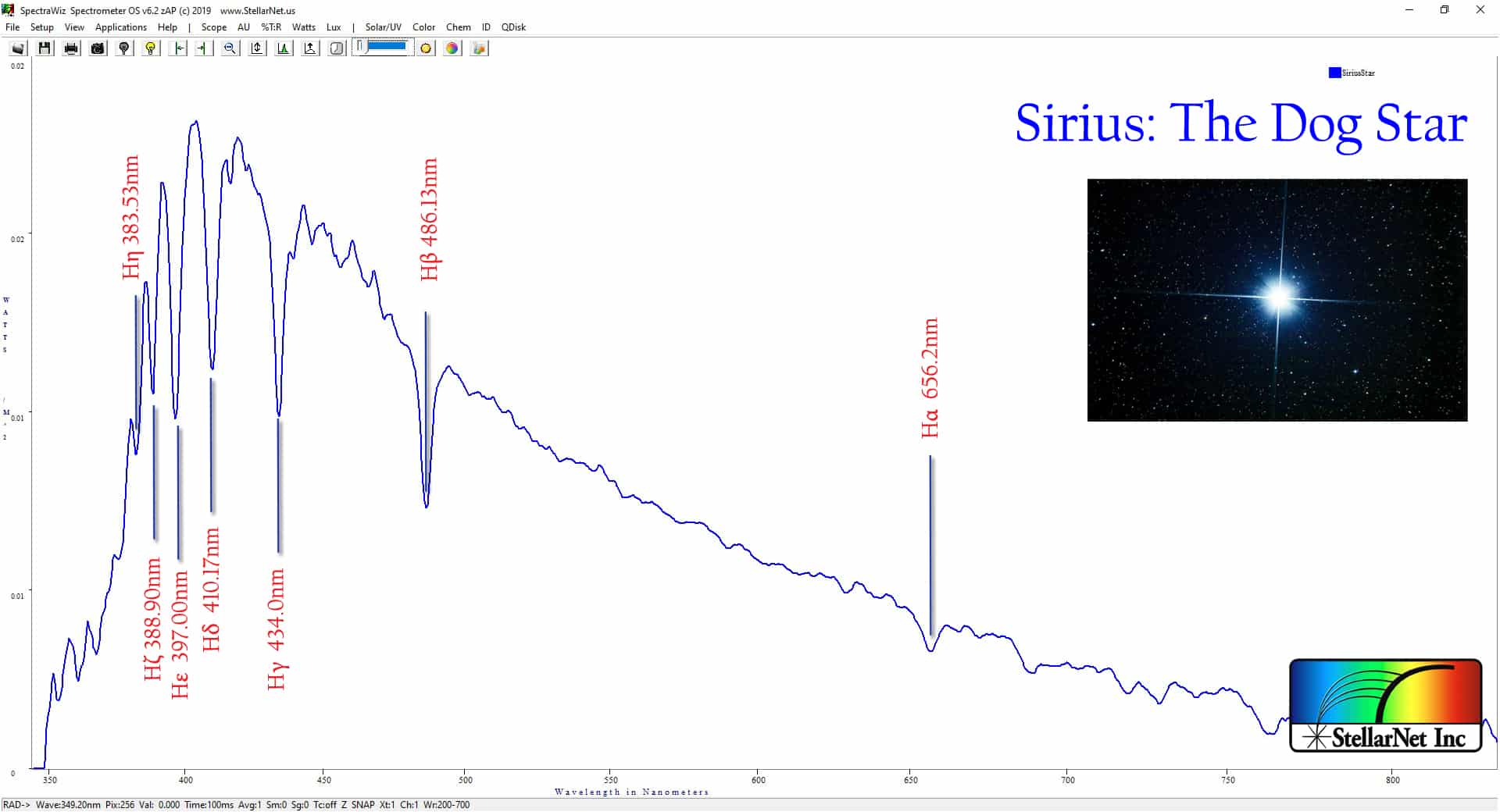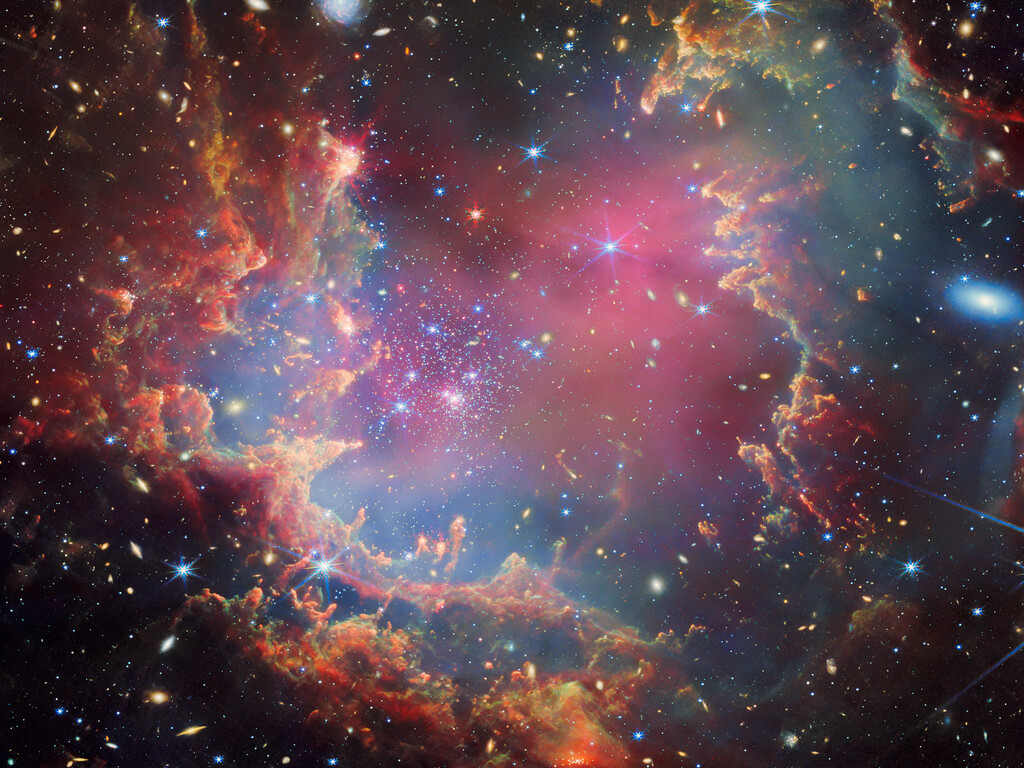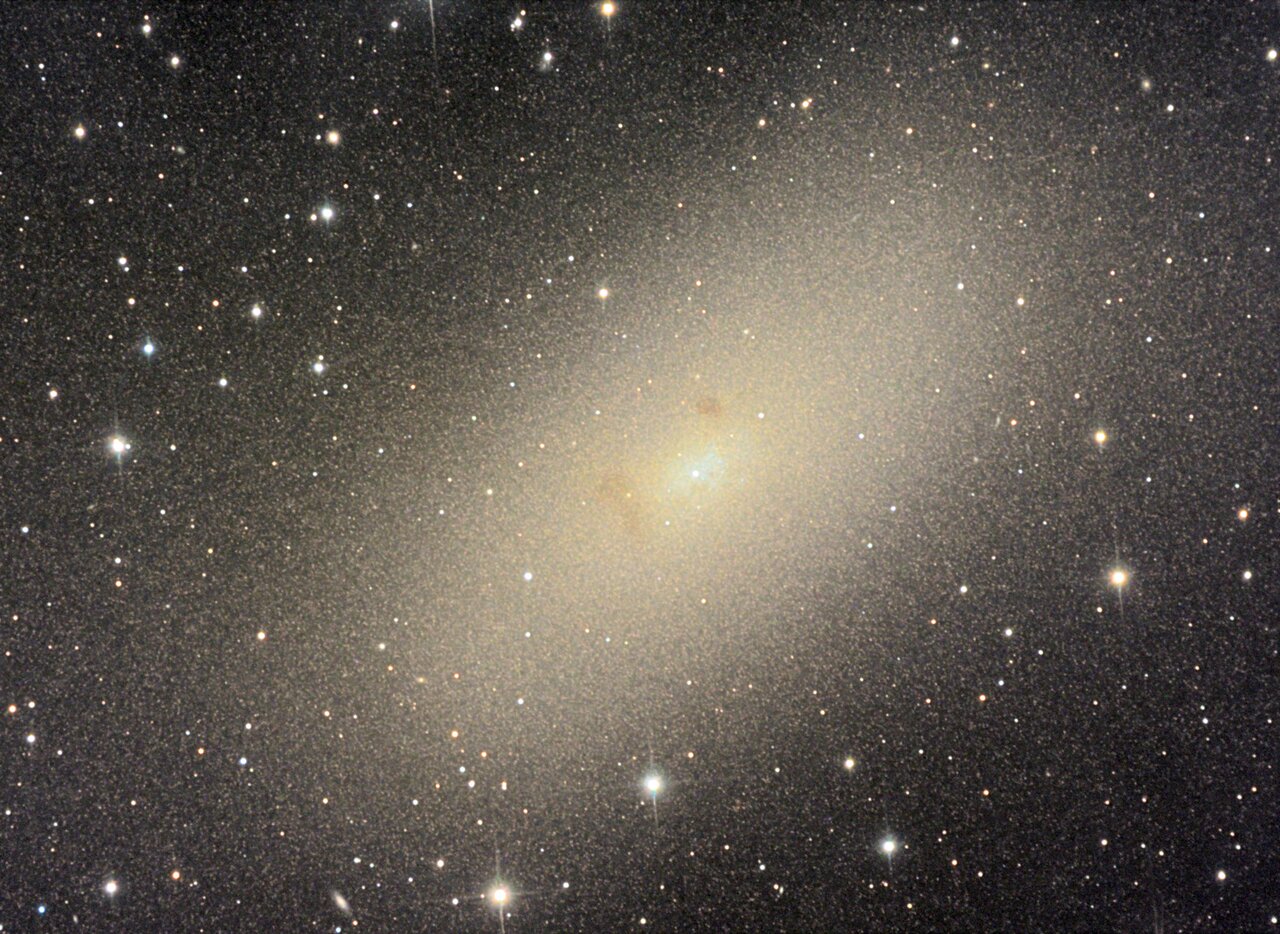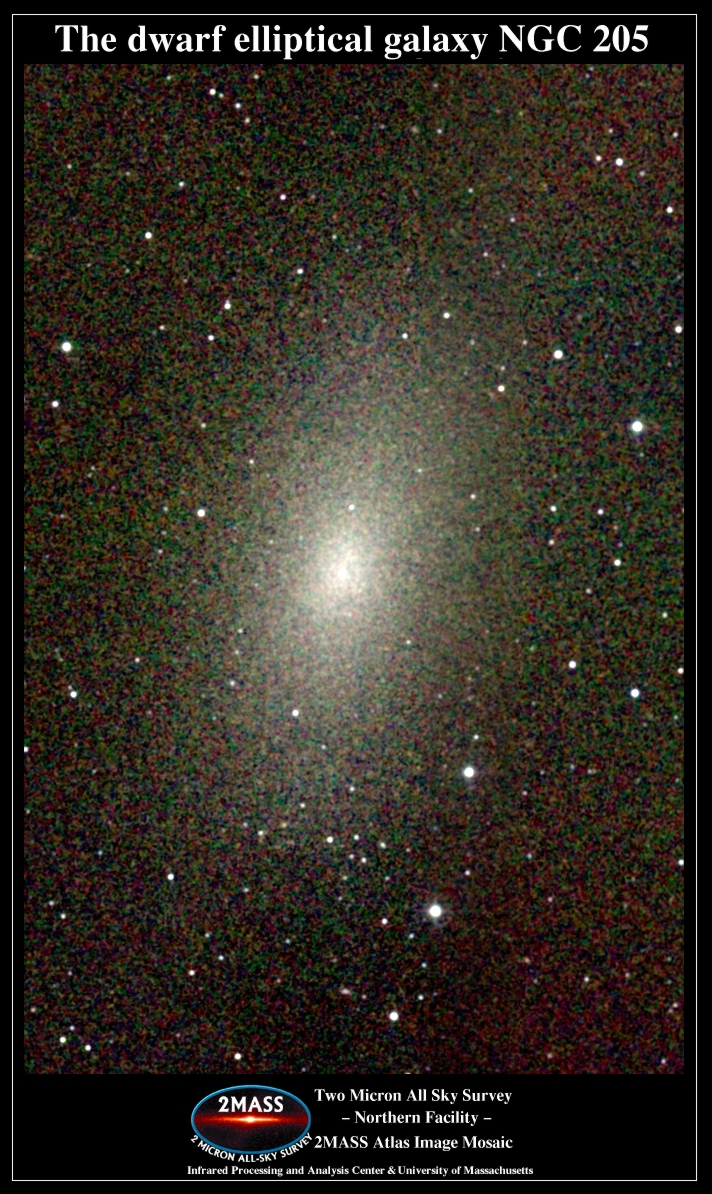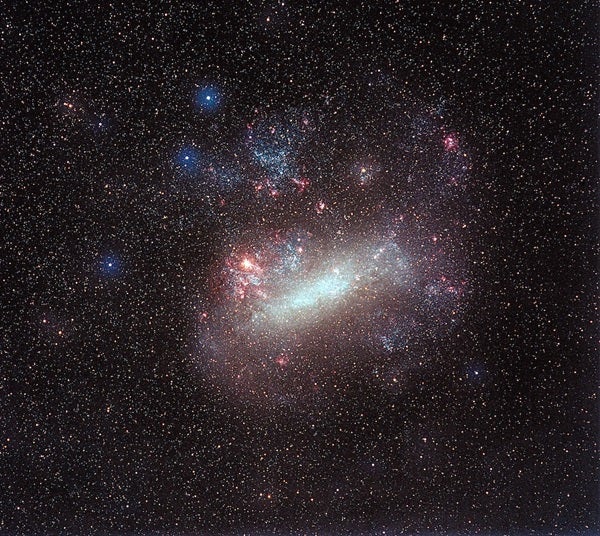beryllium732 wrote: ↑Fri Nov 08, 2024 10:14 pm
Ann wrote: ↑Fri Nov 08, 2024 3:43 pm
johnnydeep wrote: ↑Fri Nov 08, 2024 1:22 pm
You're off by 1000 or so.

Oops! Yes, it looks like it! Thanks, Johnny!

Ann
Crazy! So by it's sheer size Andromeda still has a lot of stars compared to our galaxy. That's mind boggling! You can be fooled that seeing that picture you would think it's a ellipctical galaxy and not a spiral galaxy with arms. I wonder what galaxies looked like within the first two billion of years of Bing Bang.
They've must been really bright and visible back then and both surface brightness and have a absolut magnitude well under zero. Really interesting stuff you're posting always great quality!
Thanks, Beryllium!

Yes, the first galaxies must have been bursting with brilliant nebulas, giant star clusters and very, very massive stars.
The first galaxies must also have been small, because they had not had time to grow very large. After all, galaxies grow by absorbing more and more gas and forming more and more stars. Also they grow by merging with other galaxies.
In the nearby universe, starburst galaxies are also typically small. That's because today's large galaxies have typically undergone so many episodes of star formation and several minor mergers that they have, frankly, "used up" most of their gas. And one way that they use up their gas is by forming so many small red M-type dwarf stars! The red dwarf stars are surprisingly massive for their faint light.
Consider the very nearest star after the Sun, Proxima Centauri:
As the Color Commentator, I feel compelled to show you that Sirius is not a yellow-white star:
Back to Proxima Centauri. Take a look at this picture to see how faint it is (Proxima is located in the center of the red circle). The bright star at left is the binary star Alpha Centauri A+B, located at approximately the same distance from us as Proxima.
Alpha Centauri A just a tiny bit more massive than the Sun, 1.0788±0.0029 solar, but its light output is about 1.5 times the luminosity of the Sun. Alpha Centauri B is a tiny bit
less massive than the Sun, 0.9092±0.0025 the mass of the Sun, but its light output is only about 0.5 times the luminosity of the Sun.
What about Proxima? Its mass is only 0.1221±0.0022 the mass of the Sun, some 12% the mass of the Sun. The bolometric (total) luminosity of Proxima, including the infrared light it emits, is 0.001567±0.000020 solar, or ~ 1.6 parts per mille of the solar energy output. But the visual luminosity is only 0.00005 L
☉. It is frankly extremely faint!
Here is the deal. The tiny red stars like Proxima Centauri (and even the red M-type dwarfs that are considerably more massive than Proxima, some 0.5 times the mass of the Sun) fuse their hydrogen to helium so slowly that their hydrogen supply lasts for many times the current age of the Universe. That means that not a single red dwarf star that has ever been born in our Universe has died, unless it has fallen into a black hole or something. And since the red dwarf stars happily hold on to their gas supply as they slowly, slowly fuse a bit of hydrogen to helium, this in turn means that practically every hydrogen atom that has ever been trapped inside a red dwarf star is trapped there "forever", either to remain unchanged or to be fused into helium. Also, by far most stars that belong to our own galaxy (some 80%) are in fact red dwarfs.
If you ask me, I would guess that most of the hydrogen that was formed in the Big Bang has since been trapped inside red dwarf stars. And thus, this hydrogen can't be used for any fresh star formation again, at least not until the Universe is several times its current age. By contrast, massive stars live short lives and give back much of their gas to the Universe, either because they explode or, far far more common, because they shed their outer layers when they become white dwarfs.
Now let's consider large galaxies versus small galaxies. In the large galaxies, many things have already happened, repeated episodes of star formation have taken place, and there have been galactic mergers. The gas in large galaxies gets jostled round, either so that it concentrates in certain places and gives rise to star formation again, or so that it gets so turbulent and hot that it can't form stars any more, certainly not for a long time.
Also remember that every episode of star formation creates a large number of new red dwarfs, so for each episode of star formation, more gas is "trapped" and made unavailable for new star formation. Take a look at this JWST image of cluster NGC 602 in the Small Magellanic Cloud. Look how many small stars are formed for every large star (and then remember that infrared-detecting JWST will make the red dwarfs look brighter):
But in the nearby universe, small galaxies are small because they haven't had much activity going on inside them for a long time. They haven't had a new episode of star formation for a long time, and they haven't had any mergers. Many small galaxies have an untapped reservoir of gas that they could use to create new stars, if they just get the right trigger.
Take a look at this diagram of the star formation history of the Large Magellanic Cloud:
The star formation history of the Large Magellanic Cloud.
Credit: Sidney van den Bergh.
The diagram of the star formation history of the Large Magellanic Cloud, which I photographed from a book, goes from right to left, so that the oldest episodes of star formation are at right and the more recent ones at left. As you can see, the Large Magellanic Cloud formed few or no stars for much or most of its history. (Please note that when Sidney van den Bergh created his diagram, the Universe was believed to be 20 billion years old. Now it is considered to be less than 14 billion years old.)
If Sidney van den Bergh is right about the star formation history of the Large Magellanic Cloud, then it is perhaps possible that the LMC used to look like NGC 205 (the largest satellite galaxy of Andromeda) when it was at the end of its longest period of inactivity. Maybe?
Is NGC 205 all red and dead, then? Not totally red and dead, because there are a few small dust lanes near the center of NGC 205, and at the very center, there is a tiny bluish (i.e., relatively young) population.
But the reason why NGC 205 is "almost red and dead" is that it has undoubtedly orbited Andromeda for quite a long time, and it has been "harassed" into losing most of its gas. The Large Magellanic Cloud, by contrast, has only recently started interacting with the Small Magellanic Cloud, and it has been captured by the Milky Way even more recently.
Anyway, the Large Magellanic Cloud undoubtedly had a considerable gas reservoir of its own even before it started interacting with the Small Magellanic Cloud. But the interaction has rejuvenated the LMC and given it "fresh blood", as it has been proved that gas is streaming from the Small Cloud to the Large Cloud, and the Large Cloud has become a starburst galaxy.
So, yes. The early Universe was chock full of gas, and it must have been full of small starbursting galaxies.
So, yes. That is probably what the early universe looked like.
Ann

